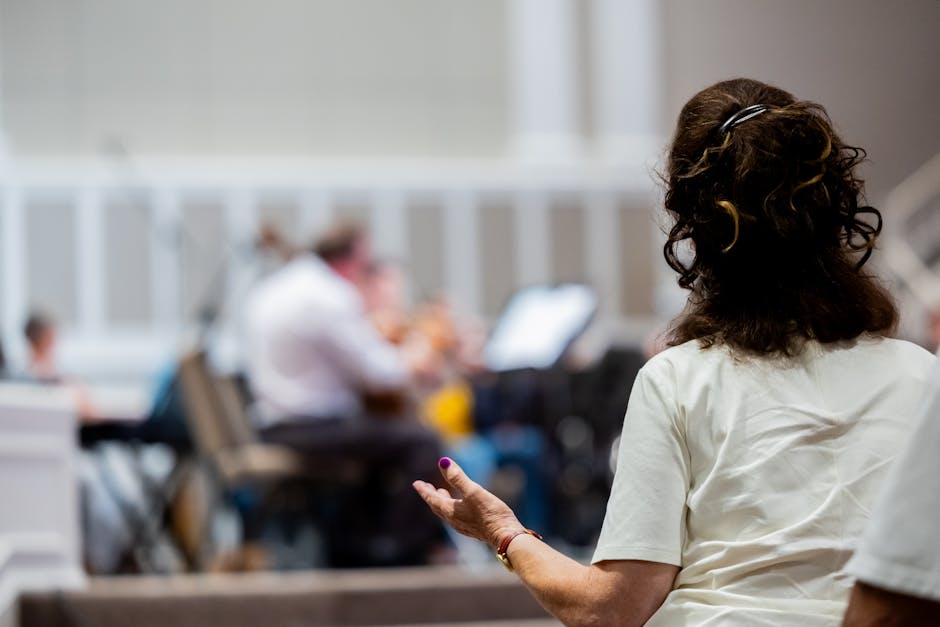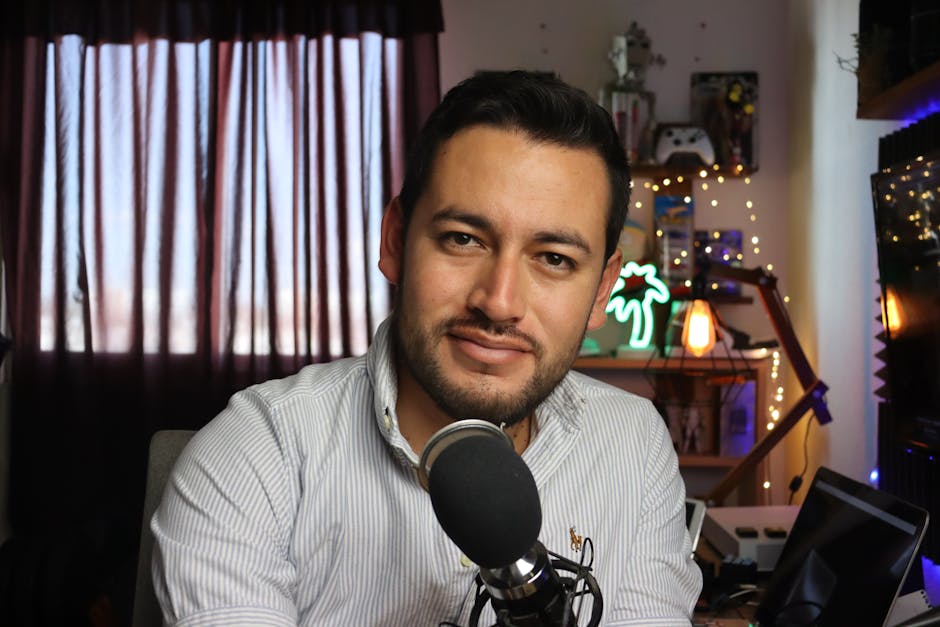The Best Practices for Engaging with Your Podcast Audience.
The Best Practices for Engaging with Your Podcast Audience
In the vast and ever-growing landscape of podcasting, simply producing great audio content is no longer enough to stand out. The true differentiator, the secret sauce that transforms casual listeners into fervent fans, lies in genuine audience engagement. It’s about building a bridge between your voice and their ears, creating a dynamic relationship that extends far beyond the play button. An engaged audience isn’t just a number; it’s a community, a feedback loop, and the most powerful engine for your show’s sustainable growth. Without active engagement, even the most brilliant podcast risks becoming a monologue in a crowded room. This guide dives deep into the actionable strategies that will help you forge those vital connections, ensuring your listeners feel heard, valued, and inextricably linked to your podcast’s journey.
Fostering Two-Way Conversations Beyond the Mic
The essence of engagement is a conversation, not a lecture. While your podcast episodes are inherently a one-way broadcast, the best practices for audience engagement involve meticulously crafting opportunities for listeners to speak back and feel heard. This isn’t just about asking for reviews; it’s about inviting genuine dialogue. Start by integrating clear, compelling calls to action (CTAs) within your episodes. Don’t just say “email us”; instead, ask a specific question like, “What’s one challenge you’re facing with [topic discussed in episode]? Share your thoughts on our social media using #MyPodcastQuestion.” This specificity lowers the barrier to entry and encourages thoughtful responses. Consider dedicating a segment to listener questions or comments, either by reading them aloud or playing recorded voicemails. Services that allow listeners to leave audio messages directly can add an incredibly personal touch, making the audience feel like co-creators rather than just consumers. Remember, every interaction, no matter how small, reinforces the idea that your podcast is a dialogue, not a monologue.
Beyond direct questions, think about interactive elements that can be woven into your show’s fabric. Could you run polls on social media related to upcoming topics and discuss the results in a subsequent episode? Could you invite a listener to briefly share their perspective on a specific subject, perhaps even as a short interview segment? The goal is to consistently demonstrate that listener input genuinely shapes the content and direction of your show. This active solicitation and integration of audience contributions creates a powerful feedback loop that not only boosts engagement but also provides invaluable insights into what your audience truly wants to hear. It transforms passive listening into an active, participatory experience, building a foundation of loyalty and connection.
Cultivating a Vibrant Community Hub Off-Air
While the podcast itself is the anchor, the most enduring engagement often happens in dedicated spaces outside of the audio feed. Building a “community hub” where listeners can connect with each other and with you is paramount. Platforms like private Facebook groups, Discord servers, or even dedicated subreddits can serve as powerful gathering places. These aren’t just promotional channels; they are spaces for discussion, shared interests, and mutual support. Encourage listeners to introduce themselves, share their thoughts on recent episodes, and even discuss related topics that extend beyond the podcast’s direct scope. The key is to actively participate in these spaces yourself – respond to comments, ask follow-up questions, and initiate discussions. Your presence makes the community feel authentic and cared for.
To truly cultivate a vibrant hub, consider offering exclusive content or early access to episodes within these communities. Host live Q&A sessions, “ask me anything” events, or even virtual meet-ups where listeners can interact with you and each other in real-time. Spotlight active community members, celebrate milestones (like a certain number of posts or a listener’s anniversary with the podcast), and create themed discussion threads. The more you invest in nurturing these spaces, the more your audience will feel a sense of belonging and ownership. This transforms them from individual listeners into a collective, passionate community that advocates for your show and deepens their personal connection to its mission. A strong community is also a powerful engine for organic growth, as engaged members are far more likely to recommend your podcast to others.
For more insights on building and managing an online community, you might find resources on community building platforms helpful. Understanding the dynamics of these spaces is crucial for long-term success.

Tailoring Content to Spark Listener Participation
The ultimate form of engagement is when your audience feels that the content itself is, in some way, shaped by them. This doesn’t mean letting listeners dictate every episode, but rather creating a responsive feedback loop where their input visibly influences your show. One highly effective practice is to dedicate entire episodes or segments to listener-generated content. This could involve “Q&A episodes” where you answer questions submitted by the audience, “listener story” episodes where you share personal anecdotes related to your topic, or even “mini-mastermind” sessions where you help a listener solve a specific problem on air. By showcasing their contributions, you elevate their role from passive consumer to active participant, making them feel genuinely invested.
Beyond dedicated segments, subtly weave listener input throughout your regular episodes. Reference specific comments or emails you’ve received, crediting the listener by name (with their permission). Address common questions or misconceptions that frequently arise in your community. Use polls and surveys not just for fun, but to genuinely gauge interest in future topics or episode formats. For example, if you’re torn between two potential episode ideas, poll your audience and announce the winning topic in a subsequent episode. This transparent process not only validates their opinions but also makes them feel like a part of the creative journey. When listeners hear their own ideas, questions, or even their names mentioned on your show, it creates an unparalleled sense of connection and significantly boosts their loyalty. It’s a powerful way to demonstrate that their voice truly matters.
Mastering the Art of Active Listening and Responsive Feedback Loops
Engagement isn’t just about asking; it’s crucially about listening and responding. The most successful podcasters don’t just collect feedback; they analyze it, internalize it, and visibly act upon it. This requires a commitment to active listening across all channels – emails, social media comments, community forums, reviews, and even direct messages. Don’t let listener input sit in an inbox; dedicate time each week to review and categorize it. Look for recurring themes, common questions, and areas where your audience expresses confusion or strong interest. This consistent review process is the bedrock of a truly responsive podcast.
Once you’ve listened, the next critical step is to respond, both directly and indirectly. Directly, aim to reply to as many individual comments and messages as possible. Even a simple “Thanks for sharing!” can go a long way. Indirectly, and perhaps more powerfully, integrate the feedback into your show. If multiple listeners are asking for a deeper dive into a particular subtopic, plan an episode around it. If there’s constructive criticism about your audio quality or episode length, address it transparently and explain what steps you’re taking to improve. Acknowledge listener contributions on air, giving shout-outs and crediting those whose ideas or questions have influenced your content. This transparent cycle of listening, adapting, and acknowledging builds immense trust and loyalty. It shows your audience that their opinions are not just heard, but valued and acted upon, making them feel like a true partner in your podcast’s evolution. For general tips on maximizing your podcast’s reach, consider exploring strategies for Growing Your Podcast Reach, as engagement often goes hand-in-hand with discoverability.
Making Every Listener Feel Heard and Valued
At the heart of all best practices for audience engagement lies a simple truth: people want to feel acknowledged and appreciated. This extends beyond just responding to a comment; it’s about creating an overarching atmosphere where every listener, whether they’ve interacted once or a hundred times, feels like an important part of your podcast family. Personalization is key here. While you can’t personally connect with every single listener, you can implement strategies that make the experience feel more intimate. Consider shout-outs to loyal listeners, celebrating their milestones (e.g., “Thanks to Sarah for being with us since episode 10!”), or even small, personalized gestures for your most engaged community members.
Beyond individual recognition, consistently express gratitude for your audience’s time and support. Remind them why their listenership matters, how their engagement helps the show grow, and what impact they have on you as a creator. This doesn’t need to be a grand speech every episode; a sincere “Thank you for listening and being a part of this journey” at the end of each show can be incredibly powerful. Transparency about your podcast’s journey, including challenges and successes, can also foster a deeper bond, making listeners feel invested in your personal and professional growth. Ultimately, making your audience feel heard and valued is about treating them not just as consumers of content, but as integral members of your podcast’s ecosystem. It’s this deep sense of belonging that transforms casual listeners into lifelong




Post Comment